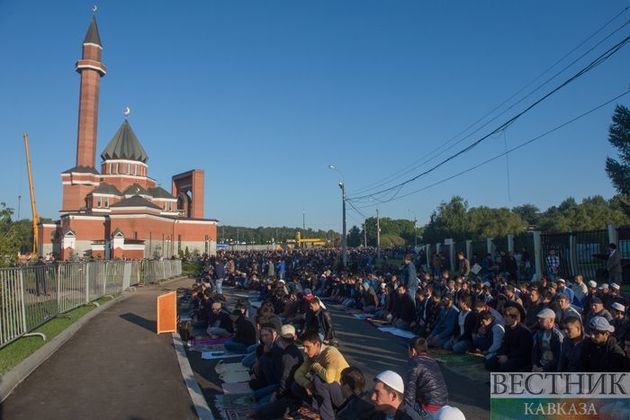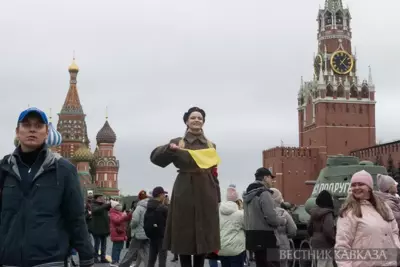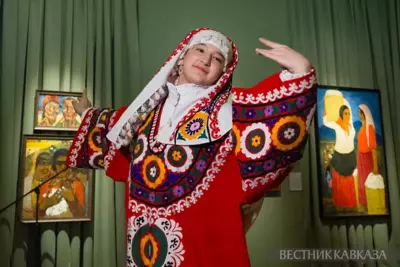In September, Russian lawmakers made another attempt to bring spiritual and church practices in line with trends in domestic and foreign government policy. The bill "On Amendments to the Federal Law" ”On Freedom of Conscience and on Religious Associations" in terms of improving the legal regulation of the activities of religious associations was removed from consideration.
The decision was taken amid hype raised by representatives of religious organizations and human rights activists in the media space. The most resonant was the amendment, which assumes that a clergyman or preacher must have a "primary education" received in a domestic theological educational institution. If the new norm was adopted, many of the authoritative and high-ranking clergymen of all traditional Russian religions from Metropolitan Hilarion (Alfeev) and rabbis Pinchas Goldschmidt and Berl Lazar (they not only studied but were also born abroad) to muftis Talgat Tadzhuddin and Kamil Samigullin, Pandito Khambo Lama Damba Ayusheev and bishops Sergei Ryakhovsky and Paolo Pezzi would be unable to fulfill their religious commitment.
And if the ROC over the past decades has established a training system (39 theological seminaries in Russia), then the first Islamic academy was opened in Bolgar only in 2017, and just two Buddhist universities are located in Buryatia and Transbaikalia (Ivolginsky and Aginsky dastans, respectively). Moreover, in the third Buddhist region - Kalmykia - there are no higher religious institutions today. This negatively affects the region, where not only the Gelug tradition, which is prevalent among Buryats and Tuvans, is popular, but also the Kagyu school, whose lamas do not have the opportunity to get an education in Russia.
At the same time, in terms of their level and authority, Russian educational institutions cannot yet compare with foreign ones (al-Azhar and Mir-i-Arab for Muslims, Zanabazar Buddhist University for Buddhists, Israeli yeshivas for Jews and European universities for Catholics), which aggravates the staff problem for Russian religious organizations.
And what about spiritual education in southern neighboring countries?
In Georgia, the closest to Russia religiously, Catholicos-Patriarch Ilia II studied in Zagorsk (now Sergiev Posad) in the 1950s. Other hierarchs of the GOC also received spiritual education here. Georgian bishops studied not only in Russia. Thus, North American Bishop Saba studied in Belgrade, and Archbishop Zeno of Dmanisi and Agarak-Tashir - at a Catholic educational institution - the Pontifical Oriental Institute in Rome.
In Soviet times, there were no theological seminaries on the territory of the Georgian SSR for a long time (the Mtskheta seminary was established only in 1963), so this situation was largely due to despair. However, already in 2000-2010, when at least two theological academies, two institutes and four seminaries appeared in Georgia, some of the GOC future bishops studied in Moscow, Belgrade and even in Rome.
Other Christian denominations and non-Orthodox organizations in Georgia also do not need to confirm their qualifications with Georgia’s theologians. Thus, the head of the Georgian Metropolis of the Armenian Apostolic Church (AAC), Archimandrite Kirakos Davtyan, studied in Armenia’s Etchmiadzin, Bishop of the Evangelical Lutheran Church of Georgia Markus Schoch - in Germany, and Catholic Bishop Giuseppe Pazotto - in his native Italy. The Islamic leaders of Georgia have close ties with Azerbaijan or Turkey, and it is not yet possible to get a high-quality Islamic education in Georgia.
In Armenia, due to the isolation of the AAC, all hierarchs study either at the Gevorgian Academy in Etchmiadzin or at the seminary of the Great House of Cilician in Lebanon. Due to mono-ethnicity and even greater mono-religiousness, there are no heterodox educational institutions in Armenia. The few mullahs serving in Armenia study mainly in Iran, Catholic and Orthodox priests - in Italy and Russia, Yezidi sheiks and pirs - in Iraqi Lalish.
The spiritual leader of Muslims in Azerbaijan, Sheikh ul-Islam and Grand Mufti of the Caucasus, Sheikh Allahshukur Pashazadeh, studied in Mir-i-Arab and the Tashkent Islamic Institute back in the Soviet times. Today, many higher Islamic spiritual educational institutions are functioning in Azerbaijan, and rare believers go to Iranian Qom - the second Shiite theology center after Najaf.
Rabbi of the Ashkenazi Jewish community of Azerbaijan, Shneur Segal, studied in the US, and before coming to Azerbaijan, he worked on the other side of the Greater Caucasus Range - in Krasnodar.
The hierarchs and priests of the Christian communities of Azerbaijan also study in the metropolises: at the Moscow Theological Seminary or the Vienna and Lublin Catholic Universities. And the Zoroastrianism mobads (indigenous religion for Azerbaijan) come from Iran to serve in the sanctuaries of Ateshgah and Khinalig.
One must admit that in the process of religious ‘nationalization’, the post-Soviet Caucasus and Iran are still lagging behind. Certainly, the nostrification of diplomas requires interstate agreements and confidence in the quality of education of the providing country. But the spiritual sphere differs from the secular one which means completely different components of success than noble birth, good upbringing and quality education. Another qualitative distinction of the religious sphere is its absolute transboundary nature. This is especially true for universal religious systems.
Let's analyse the European experience. In Germany, a spiritual Islamic institution was established to educate ‘correct’ imams, France intends to organize the institution for mullahs. In Austria, since 2015, a system of accreditation for imams in local educational institutions has been in place, thus, it did not manage to prevent the terrorist attack carried out on November 2 in prosperous Vienna.
Post factum, it turns out that most terrorists got acquainted with radical sermons not in mosques, but in social networks, closed Telegram channels, etc. It turns out that the fight against extremism should be conducted not in mosques, but in the network, and even more broadly in the souls of believers. Only by feeling the mood and urgent problems of people, proposing a positive agenda in response, an attractive project for changes and arrangement of life, it becomes possible to achieve integration and reconciliation of people with opposite views.
Of course, propaganda and economic support of the lower classes alone cannot solve the problem of religious extremism. Radicalism must be fought in the toughest possible way. Thus, the liberal European project reveals its second weakness: the liberal idea and the liberal project have been discredited and are in crisis, and governments that are tolerant and infected with multiculturalism are unable to effectively fight radicals, including religious ones. Bureaucracy and excessive softness allow real extremists to exist in peace and prepare terrorist acts. The authorities, on the other hand, are targeting completely legal religious organizations, which require much less effort to control.
There is no doubt that sooner or later, an analogue of the US Patriotic Act will be adopted in Europe, expanding the rights of special services to control believers inclined to extremism. In the meantime, let us recall the words of William Paxton: ”ideas go booming through the world louder than cannons”, thus, borders and educational qualifications cannot control them.






